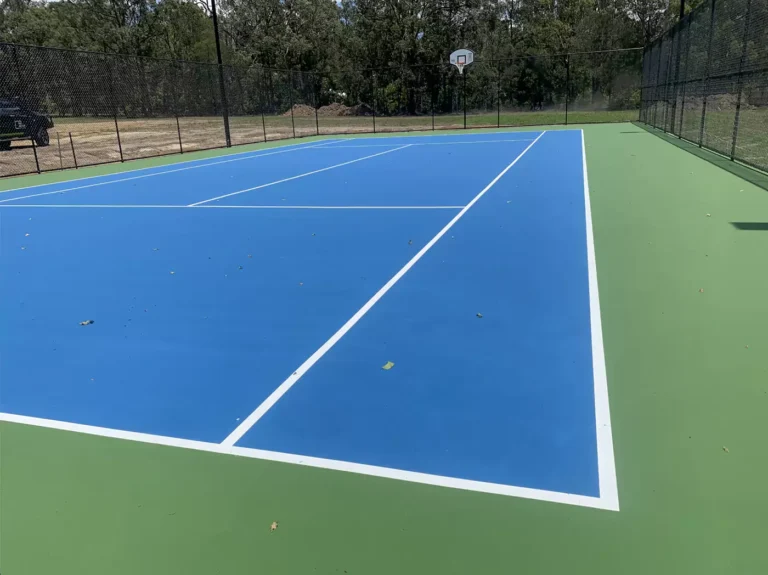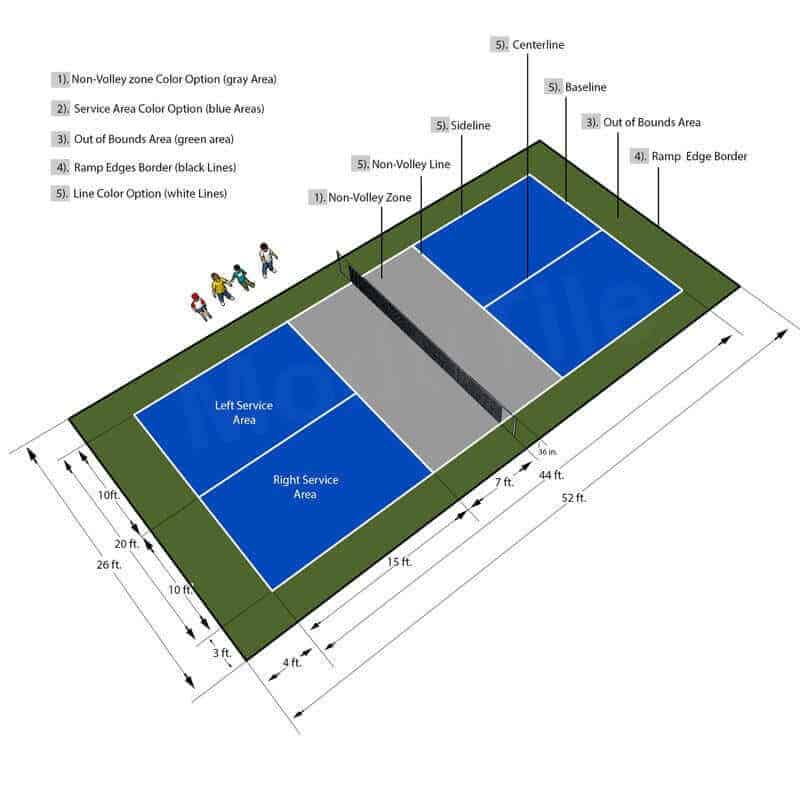Pickleball Court Construction-- Vital Tips for a Durable Court
Pickleball Court Construction-- Vital Tips for a Durable Court
Blog Article
Sustainable Practices in Pickleball Court Building And Construction You Should Know
As the appeal of pickleball remains to rise, so as well does the need for sustainable techniques in court construction. This approach not only addresses environmental concerns but also improves the long life and functionality of the courts. From choosing environmentally friendly materials to implementing effective drainage and energy-saving lighting options, there are numerous methods to consider. Yet, the impact of these techniques extends far past the court itself. Comprehending how each component contributes to an extra lasting future welcomes better exploration into the elaborate balance in between recreational development and ecological stewardship.
Choosing Eco-Friendly Products
Picking environment-friendly materials is an important action in the building of lasting pickleball courts. The selection of lasting materials not only minimizes ecological impact yet additionally improves the durability and efficiency of the court. Secret materials include recycled rubber for the surface, which provides superb longevity and shock absorption while drawing away waste from landfills.
Additionally, making use of locally sourced products reduces transportation emissions and sustains local economies. Pickleball court construction. Utilizing indigenous hardwoods for secure fencing and seats can offer a sustainable aesthetic while making certain resilience versus the components.
Integrating absorptive materials for court foundations can better add to sustainability by permitting for all-natural water drainage and lowering runoff. These options not only shield regional communities yet likewise promote healthier play atmospheres.
Reliable Water Drainage Solutions
While the selection of environmentally friendly materials is important, applying efficient drainage options is equally critical for preserving sustainable pickleball courts. Appropriate drainage not only secures the court surface area from water damages yet likewise reduces disintegration and runoff, promoting ecological stability.
Effective drain systems can include permeable paving, which permits water to infiltrate the ground instead of pooling on the surface area. This minimizes the likelihood of standing water, which can result in mold and mildew and other maintenance concerns. In addition, incorporating purposefully positioned drainage networks and swales can direct excess water far from the court location, guaranteeing a completely dry having fun surface area and protecting against dirt erosion.
Making use of native plant life in the landscaping around the courts can even more enhance water drainage by taking in excess water and decreasing runoff. These plants require much less irrigation and advertise biodiversity, aligning with lasting practices.
Moreover, it is important to on a regular basis keep the water drainage system to ensure its long-lasting efficiency. This consists of clearing particles and surveillance for obstructions. By prioritizing efficient drainage options, pickleball court fitters can significantly contribute to the sustainability and longevity of the center, ultimately profiting both gamers and the environment.
Energy-Efficient Lighting Options
As the need for pickleball continues to expand, integrating energy-efficient illumination choices into court style has actually come to be significantly important for sustainability. Traditional lights systems commonly take in too much power, adding to higher operational prices and environmental effect. Embracing modern, energy-efficient modern technologies is necessary for both new constructions and renovations.
LED (Light Emitting Diode) illumination sticks out as a premier selection due to its browse around here long life and power savings (Pickleball court construction). Compared to conventional illumination, LEDs use roughly 75% much less power and can last approximately 25 times longer, substantially minimizing upkeep expenses. The directional nature of LED lights lessens light air pollution, making certain that lighting is concentrated on the court rather than surrounding areas.

Sustainable Surface Area Alternatives
Discovering lasting surface choices for pickleball courts has actually acquired traction among gamers and building contractors alike. The emphasis on eco-friendly materials not just straightens with the expanding environmental understanding however likewise enhances the efficiency and sturdiness of the courts.
One preferred option is the use of recycled rubber, which can be sourced from used tires. This product offers excellent shock absorption, decreasing the danger of injuries for gamers while advertising sustainability. Furthermore, modular ceramic tiles made from explanation recycled plastics use one more feasible choice. These ceramic tiles are easy to install and change, and their adaptability enables for different court configurations.
All-natural lawn courts are likewise arising as a sustainable selection, advertising biodiversity and lowering the warmth island effect. Nevertheless, they call for normal upkeep and water, which might not line up with all sustainability objectives.

Water Preservation Strategies

One more effective technique entails the setup of rain harvesting systems. These systems accumulate and store rain for usage in maintaining court surface areas and landscape design. This approach not just preserves Clicking Here safe and clean water yet also minimizes dependence on municipal sources.
Furthermore, utilizing drought-resistant landscape design around the courts is crucial. Indigenous plants need less water and are better adjusted to neighborhood climate conditions, hence lowering overall water intake. In addition, utilizing efficient watering systems, such as drip watering, guarantees that water is supplied straight to plant roots, lessening evaporation and waste.
Verdict
Including lasting techniques in pickleball court building dramatically contributes to ecological preservation and source performance. By prioritizing these practices, the building and construction of pickleball courts can straighten with wider ecological goals while promoting durability and performance within neighborhoods.
As the popularity of pickleball continues to rise, so too does the need for sustainable practices in court construction.Selecting environment-friendly products is a critical action in the building and construction of lasting pickleball courts. By prioritizing energy-efficient lights choices, pickleball court fabricators can contribute to a more sustainable future while satisfying the requirements of stakeholders and players alike.Incorporating sustainable surface choices not only boosts the performance of pickleball courts however additionally paves the method for applying effective water conservation techniques.Integrating lasting practices in pickleball court building and construction significantly contributes to ecological conservation and resource effectiveness.
Report this page